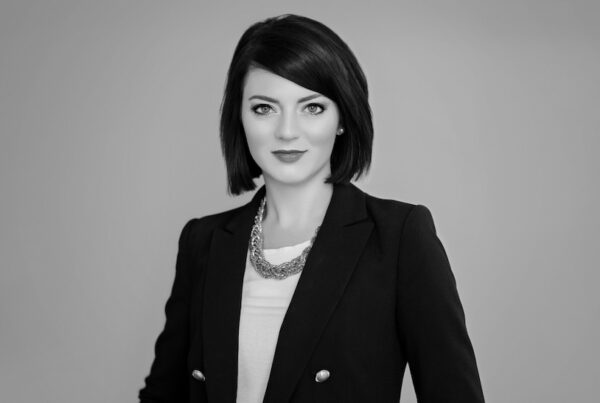News >

Power Essays 2020: If not now, when? By PHD’s David Barnes
We all know the adage about fixing your roof when the sun is shining. While recent times haven’t exactly been sunny, there is still a lot we can take from this proverb when we address how we adapt and drive growth for our clients today.
Without using the term ‘new normal’ again, as it has quickly become background noise, it is undoubtable that people’s behaviours have changed and that brands need to acknowledge these new traditions to succeed. Whilst we all immediately became Zoom pub quiz experts, downloaded HouseParty and banged pots and pans on our balconies, these are not long-term shifts that need concern us. Instead, we must use this relative downtime to ask ourselves when we last thought of a brand and why it made us peel our eyes away from our phones? The sunny period is the chance for everyone, and brands especially, to take a breath, understand the situation and uncover the opportunities not just to survive but to thrive.
Most MENA markets continue to suffer economic hardships that make identifying new strategies for growth vital for brands. While some have successfully navigated this, it has become an all too familiar scenario seeing some immediately jump back into churning out exactly what they were doing pre-lockdown. Just ask yourself: Are you behaving the same way now that you did pre-lockdown? I expect the answer is no, so why should a brand go back to behaving in the same way that it did last year?
The effectiveness-versus-efficiency debate rumbles on and the current trend appears to be an even bigger focus on efficiency within the industry. It is natural during economic downturns that marketers will get dragged towards cost-per and ROI metrics; however, there is a danger that too much focus on these could lead to an inadvertent reduction in brand growth. Looking at brands that have challenged and succeeded recently, we often see certain commonalities, namely that on the face of it they appear to be extremely inefficient. Generally, the brands that have challenged the market and seen success have done so by focusing on generating disproportionate attention, rather than being bogged down by campaign ROI. In time these brands have actually become extremely efficient, but that is because they have focused on the outcome first (effectiveness) rather than the methods of execution (efficiency).
So, how do brands achieve this today? Relating back to the notion of fixing your roof whilst the sun is shining, there has never been a greater opportunity to pause and re-assess your brand’s future. If I was to search for one positive from this situation it would be that we’ve had a chance to stop and take stock of what we are actually trying to achieve and think about how our brands can offer customers what they want. Data and technology play two key roles here firstly, ensuring we are capturing actionable customer data; and secondly to uncover invaluable insights on customer trends.
Taking the first point into consideration, it is not only the pandemic that has shifted the goalposts, as we also have Google killing off the cookie and Apple’s Identifier for Advertisers (IDFA) agenda. The relative quiet that we are experiencing with media spends should open the door to brands putting serious consideration into ensuring that their first-party data strategy is set up to capture and engage their audience. We know that e-commerce and screen time continue to grow, but how do we make use of this? Essentially, we need to make sure that our brands are either owning the entire direct-to-consumer (D2C) journey, or as much of it as possible, and that the data architecture is primed to capture everything along the way. Looking at three brands that have achieved success post-outbreak, it is clear that the drive for first-party data has become a key part of media strategy. Starbucks modified its app to allow customers to order before arrival and then pay with contactless. Nike updated its digital ecosystem to include not only e-commerce but also an app dedicated to workout content. Even Heinz, not a traditional player in the D2C arena, launched Heinz to Home boxes, allowing customers to purchase bundles. To the customer this indicates that these brands are catering to their need for convenience; however, they also facilitate the capture of crucial first-party data for brands to listen, learn and activate for business growth.
The second key use of data relates to understanding consumer trends. The most effective brands are those that know how to make the leap and keep up to date on shifts in consumer behaviour. Brands that have spotted and acted on emerging trends have tended to be most effective. Think Burger King with its new spicy menu campaign “Who Said Men Don’t Cry”, tapping into the need for humour, or Guinness’ “Saint Patrick’s Day Message”, harnessing the drive for communal care, or Nike’s “Play Inside, Play for the World” message, which built on the need for unity. These campaigns were all built on data and insight to tap into what people wanted, and they ultimately delivered that disproportionate attention through effective advertising.
The message here is clear: If not now, then when for your brand? We all know that media is a 24/7, fast-paced world, and rarely are we offered such an opportunity to pause and think. The brands that come out of this successfully will be those that have used this time to focus on their data strategies and used data to understand their customers’ needs, not those who revert back to what they were doing before and hoping for the best. Remember, Apple came out of the Great Recession by launching the first iPad; how have you spent the last few months?
This article first appeared in Campaign Middle East.


